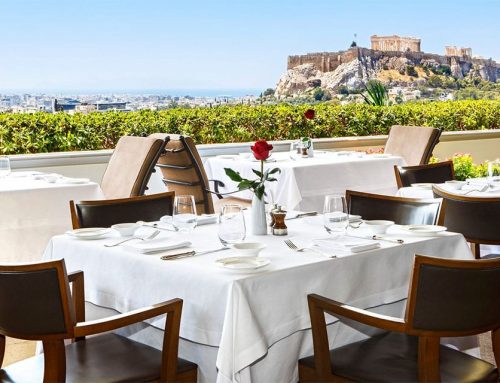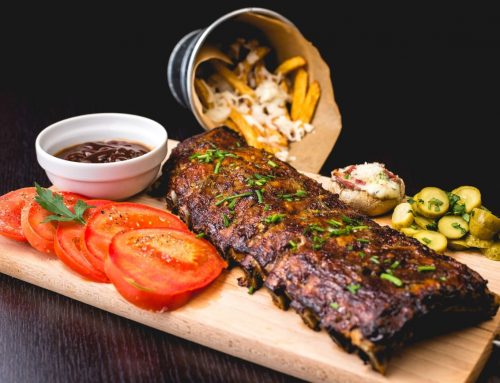Whether you have been in Spain three years like me or just three weeks, understanding and adapting to the Spanish dining culture can be difficult but follow these tips and you will be on your way in no time! Here are Eight steps to dining out like a local in Spain.
Dining times
Dining times here in Spain are much later than what you are may be used to. Lunch is usually between 2-4pm and dinner from 8.30pm onwards. Most restaurants will open at these times and close between the seatings to reset for dinner and give their own staff a chance to rest and eat, so if you are like me and like to eat an early dinner (6-8pm), this could be difficult to find unless you are in the centre of one of the big cities such as Madrid where kitchens are open all day. This is one of the biggest hardest cultural differences many expats find it difficult to adjust to.
Menu del Dia
Translated to “Menu of the Day”, you will see many chalkboards offering these outside most of the traditional Spanish restaurants at lunchtime. For a set price you can enjoy a starter, main course, dessert or coffee, a drink and bread. These can range from €9 up to around €15 depending where you are but are a common choice for most workers as it is usually a large meal which will set you up for the rest of the day. In Spain, lunch is considered their largest meal and dinner is often something smaller. Many attribute this as one of the main reasons why Spanish people enjoy such long life expectancy.
TOP TIP: Out with a group of 2 or more? Order “agua, vino y casera” which basically gives you a large bottle of water, a bottle of wine and a bottle of casera (a sweet fizzy soda water). This allows you to have more than one drink for the same price. Word of warning: Alcohol is prevalent throughout the day even during working hours, the drinking culture here is as common as going for a coffee (plus the prices are very reasonable, thanks to the many local brands of he country)
Where are the vegetables?
Coming from the UK I grew up on meals which consisted of meat, potatoes and vegetables. Here in Spain a portion of vegetables with your meal is quite uncommon and even hard to find as a side dish on most menus. Aside from a couple of pimientos de Padron (Small green peppers cooked in oil) or a side salad (iceberg lettuce, tomato, onion and tuna – yes tuna is a common ingredient in salads) the absence of vegetables on plates is very evident.
That said, potatoes is a main staple with most meat and fish dishes and a meal is always served with bread (but not butter).
TOP TIP: If you don’t want potatoes, it’s worth asking if they have an alternative as an accompaniment. If you don’t ask, you don’t get.
Eating al fresco
One of the perks of living in Spain is undoubtedly the climate and the joy of eating in the sunshine even in March or October.
The streets and squares of Spain are lined with terrazas and it is tempting to choose to eat al fresco. However, if you do decide to sit here be aware that you could be charged a premium, something that isn’t always explained when you sit down and order.
After dinner drinks
Dining out in Spain is a very social experience, many locals will often meet for an aperitivo and then spend at least 2 hours eating lunch. After lunch is finished, it is common to order a “chupito” which usually would be something creamy, similar to a Baileys or something more herbal. In many restaurants, especially more traditional Spanish ones, you will be offered these for free. But after dinner is the time to order “copas”: Long drinks such as gin and tonic or rum and coke.
To tip or not to tip?
Unlike other cultures tipping is not something that is compulsory or expected here, and many could arguys meet e that as a result of this the customer service does not always meet the standard you’d desire. However, if you do feel you want to give something and the staff were particularly friendly and efficient then a handful of small change is more than enough.
Throwing serviettes on the floor
Particularly in traditional bars where stools are placed at the counters or there is a large space to stand, you will start to notice serviettes or tissues on the floor, and I don’t mean just a few here and there. This was one of the most difficult things to adjust to and actually I still question it now. Someone once told me that if a someone is to throw one on the floor it is a sign of a good experience. This always confused me as there are bins at floor level, yet none of these were any-where close.
Enjoying the “Free tapas”
Spain is well known for giving out a small “tapa” for free when you order a drink. Now, depending where you are, you can experience very different things. Smaller offerings can include olives or crisps (chips) but this could also span to tortilla, potatoes or some sort meat or fish with bread.
TOP TIP: When going to a bar where you know you will order food, only order a drink to start and wait a while to suggest you are interested in food. By doing so, you are more likely to get that “free tapa” with your drink at the beginning, rather than risk missing out because the staff know you will be ordering food and don’t want to fill you up with a freebie.
Source: The Local





